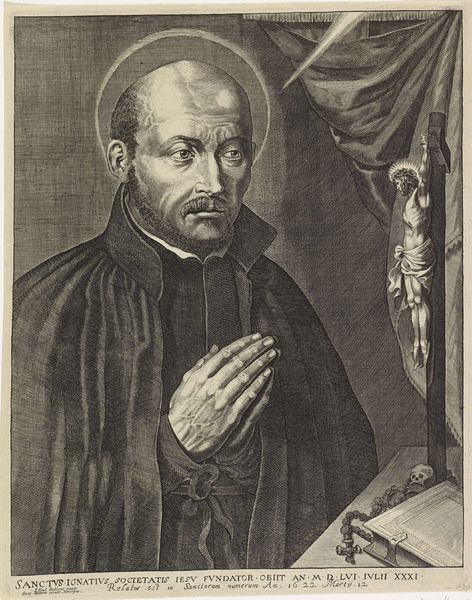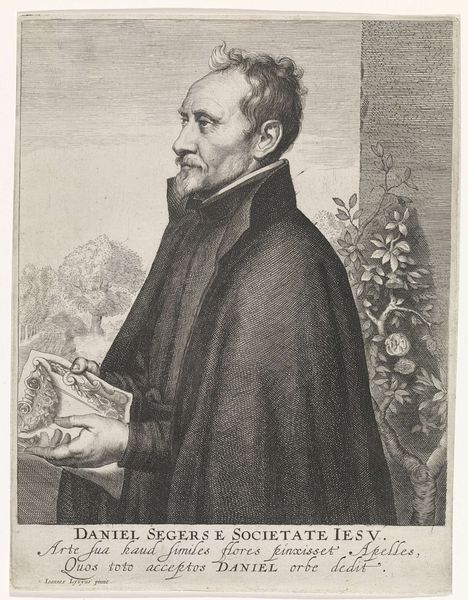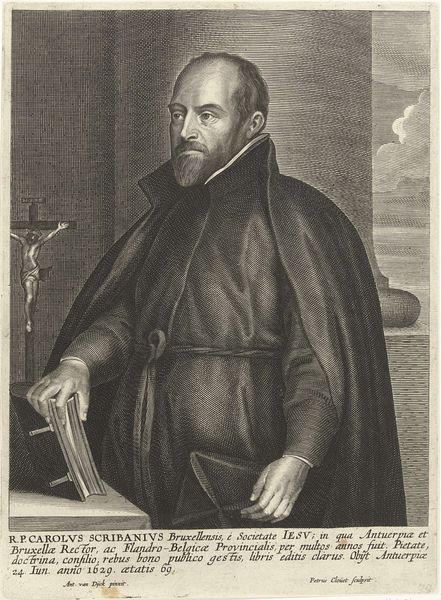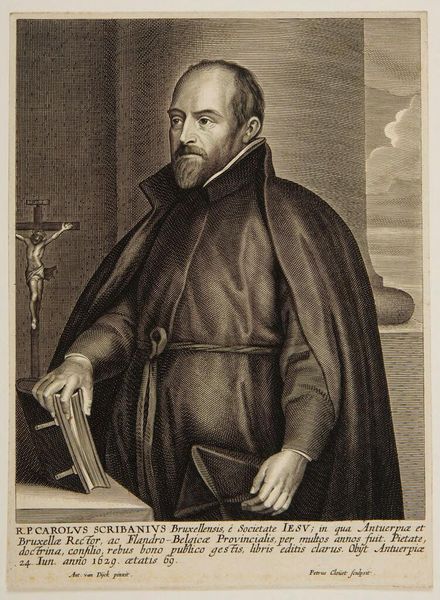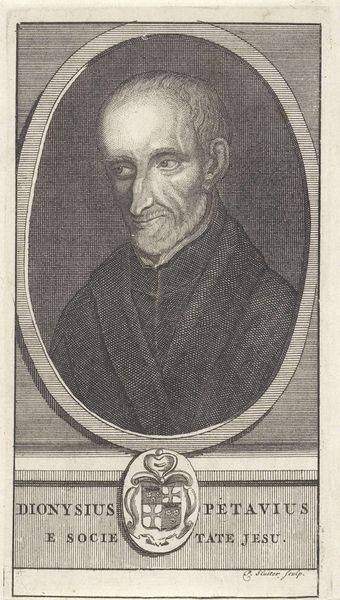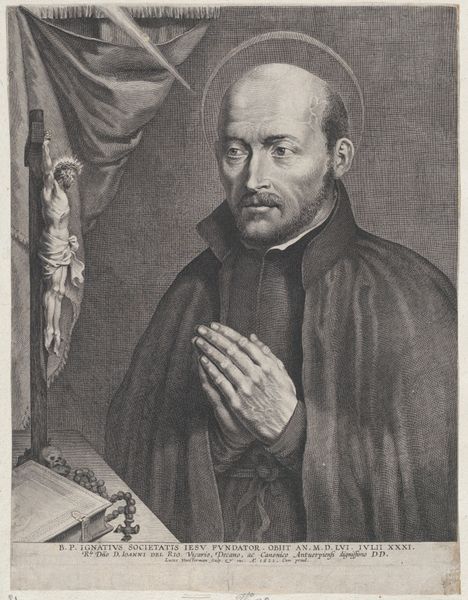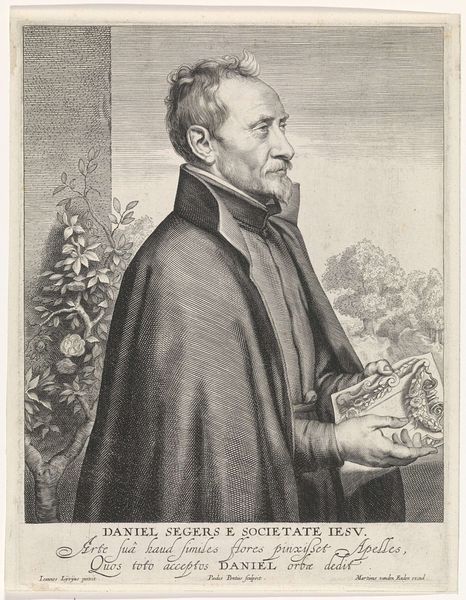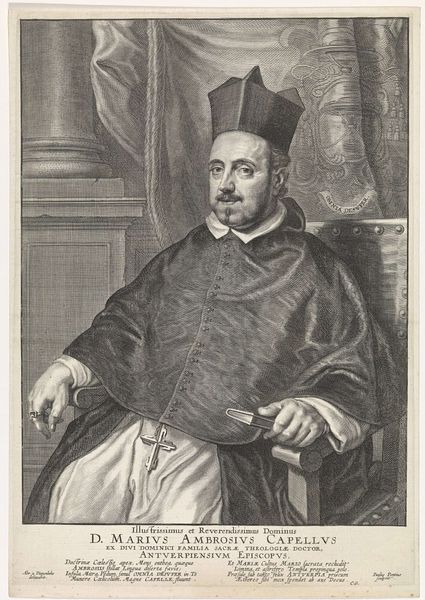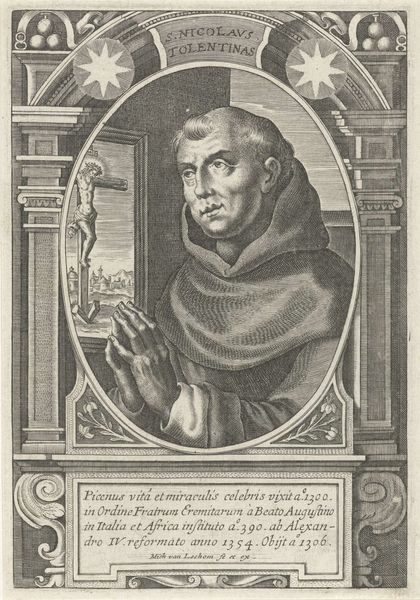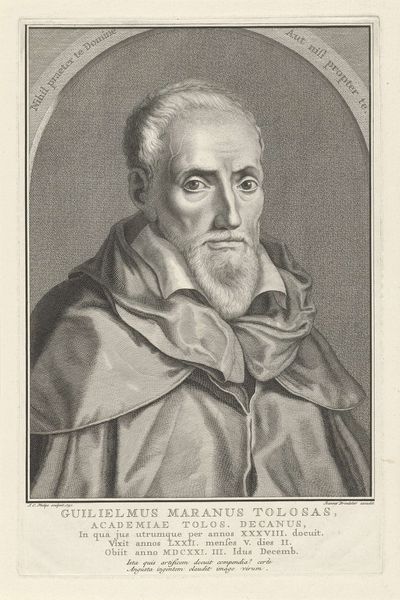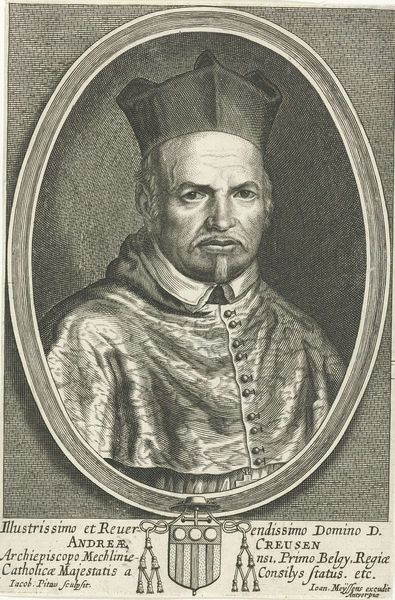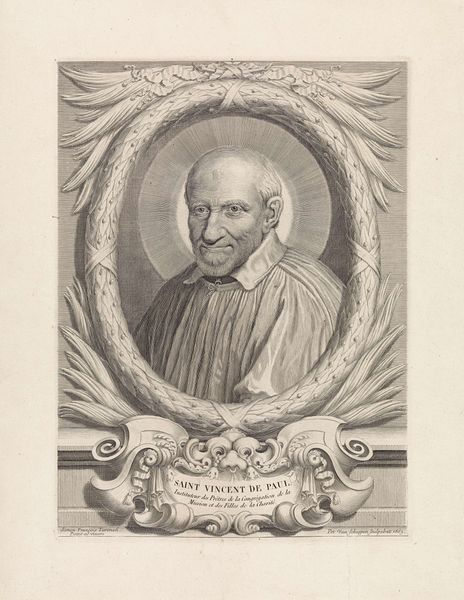
print, engraving
#
portrait
#
baroque
# print
#
old engraving style
#
caricature
#
portrait drawing
#
engraving
Dimensions: height 154 mm, width 99 mm
Copyright: Rijks Museum: Open Domain
Curator: Before us, we see a baroque engraving titled "Portret van Alphonse Rodriguez" dating back to between 1654 and 1722, crafted by Gaspar François Edelinck. It’s an arresting image. Editor: Yes, my immediate sense is one of reverence and quiet introspection, heightened by the contrast between the darkness of his cloak and the divine light filtering down from above. The composition is very much divided vertically, earthly below, heavenly above. Curator: It's a traditional pose. His hands are clasped in prayer, his gaze lifted, directed to the divine. But tell me, what meaning do you think such a gesture held for viewers of the time? Editor: These upward gazes, often combined with gestures like Rodriguez’s, carry multiple levels of symbolic meaning that transcends the simple act of praying. You can see his directed gaze toward enlightenment; his turned out palms open themselves up to reception of divine guidance. There's also a clear demonstration of faith, designed to be publicly accessible, very important for counter-reformation iconogrpahy. Curator: Exactly! And look closer—see how Edelinck used hatching and cross-hatching to create depth and texture? The lines really define not only the planes of his face, but even his emotion. I find that attention to detail truly remarkable in printmaking of this period. Editor: The linear emphasis and contrast do make for a potent visual experience. There’s even something slightly caricatured about the treatment of Rodriguez’s features. It brings an individual likeness to this portrayal and underscores both spiritual devotion and the weight of earthly contemplation. It is very baroque. Curator: Agreed, and the light seems to spotlight Rodriguez's own enlightenment but within a system and structure—this feels so tied to the era's societal values. Edelinck used portraiture in a unique way to create not just an image but also an enduring symbol. Editor: I find this baroque aesthetic intriguing because it speaks to so much history and visual vocabulary—how faith, representation, and individual likeness combine in compelling and accessible designs. Curator: A beautiful way to sum up a complex, beautiful, enduring portrait!
Comments
No comments
Be the first to comment and join the conversation on the ultimate creative platform.
